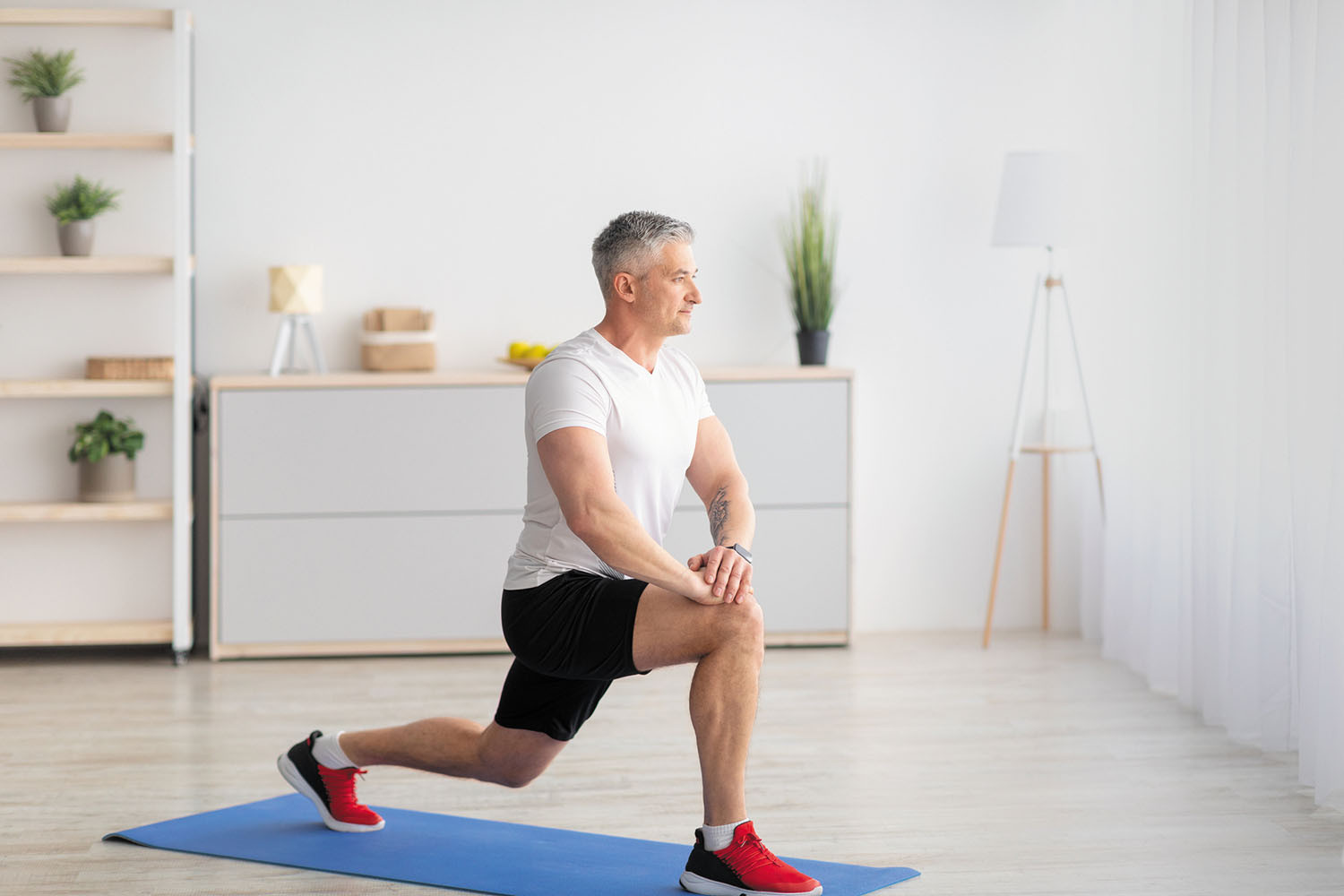Get a lift from body-weight workouts
Short on exercise time or bored with your normal workout? Try this three-move body-weight routine.
- Reviewed by Howard E. LeWine, MD, Chief Medical Editor, Harvard Health Publishing; Editorial Advisory Board Member, Harvard Health Publishing

Regular exercise doesn't always conform to your schedule or mood. Sometimes you're crunched for time. Sometimes your typical workout feels uninspired. Sometimes you just need a quick jolt to jump-start your day.
When these moments arise, your body can lend a hand.
"Body-weight exercises are not only versatile — as you can do them anytime, anywhere, without any equipment — but they help improve everyday movements," says Shawn Pedicini, a physical therapist specializing in sports and orthopedic injuries with Harvard-affiliated Spaulding Rehabilitation Network.
Muscle activation
One of the main advantages of body-weight movements is that they activate the smaller stabilizing muscles that sometimes get missed when you use gym machines or dumbbells. As their name implies, stabilizer muscles help to stabilize larger muscles so they can more effectively do their job.
"This comes in handy for daily activities that require balance and stability, like climbing stairs, squatting, twisting, and reaching," says Pedicini.
It only takes a few body-weight exercises for an all-around workout. The following is a simple three-move routine that hits the major muscles. It consists of push-ups (arms, shoulders, chest), lunges (buttocks, legs), and a plank pose (core).
To complete one circuit, do eight push-ups, eight lunges on each side, and a plank pose for 15 to 30 seconds. Rest for a minute and then repeat the circuit two more times, with a rest period in between. The entire routine takes about 15 minutes to complete.
Push-ups
Begin in a full plank position with your arms extended, palms flat and just below shoulder level, feet together or about 12 inches apart. Keep your back straight and your weight evenly distributed.
Movement: Look down and lower your body until your elbows are at 90° (or go to the floor to rest, if needed), and then push back up to complete one rep.
Tips:
- Keep your head in line with your spine.
- Hold your core tight.
- Don't bend at the hips.
Make it easier: Do a modified version from a hands-and-knees position. Another option is inclined push-ups, in which you place your hands on a counter or wall at a 45° angle, which puts less strain on the wrists and shoulders.
Make it harder: Slow your tempo and take two to three seconds to go down and one second to go up.
Lunges
Stand up straight with your right foot one to two feet in front of your left foot. Shift your weight forward and lift your left heel off the floor.
Movement: Bend your knees and lower your torso until your right thigh is parallel to the floor. Keep your hands on your hips or place them on your knee for stability. Hold, then return to the starting position. Finish all eight reps, then repeat with your left foot forward. This completes one set.
Tips:
- Don't extend your front knee past your ankle.
- In the lunge position, keep your shoulder, hip, and rear knee aligned.
- Don't lean forward or back.
Make it easier: Lower your torso only halfway. Hold on to the back of a chair with one hand to help yourself balance.
Make it harder: Hold for four counts in the lunge position before returning to the starting position. Or hold dumbbells in each hand as you lunge.
Plank
Kneel on all fours with your hands and knees directly aligned under your shoulders and hips.
Movement: Tighten your abdominal muscles and walk your hands forward. Lower your upper body onto your forearms. Clasp your hands and align your shoulders directly over your elbows. Raise your knees off the floor so your body forms a straight line from your head to your feet. Hold this position for 15 to 30 seconds.
Tips:
- Keep your neck and spine aligned.
- Tighten your abdominal muscles so your belly doesn't sag.
- Look at the floor and not up, which can strain your neck.
Make it easier: If resting on your forearms is painful, do the plank from a starting push-up position with your arms extended. If you have back pain or other back issues, do the plank on your knees, or lean against a counter with your body at a 45° angle.
Make it harder: As you hold the plank, try alternating leg lifts, raising one leg for a second or two and then repeating with the other leg.
|
For more exercise examples, check out Body-Weight Exercise from Harvard Health Publishing, available at www.health.harvard.edu/bwe. |
Image: © Prostock-Studio/Getty Images
About the Author

Matthew Solan, Executive Editor, Harvard Men's Health Watch
About the Reviewer

Howard E. LeWine, MD, Chief Medical Editor, Harvard Health Publishing; Editorial Advisory Board Member, Harvard Health Publishing
Disclaimer:
As a service to our readers, Harvard Health Publishing provides access to our library of archived content. Please note the date of last review or update on all articles.
No content on this site, regardless of date, should ever be used as a substitute for direct medical advice from your doctor or other qualified clinician.
















